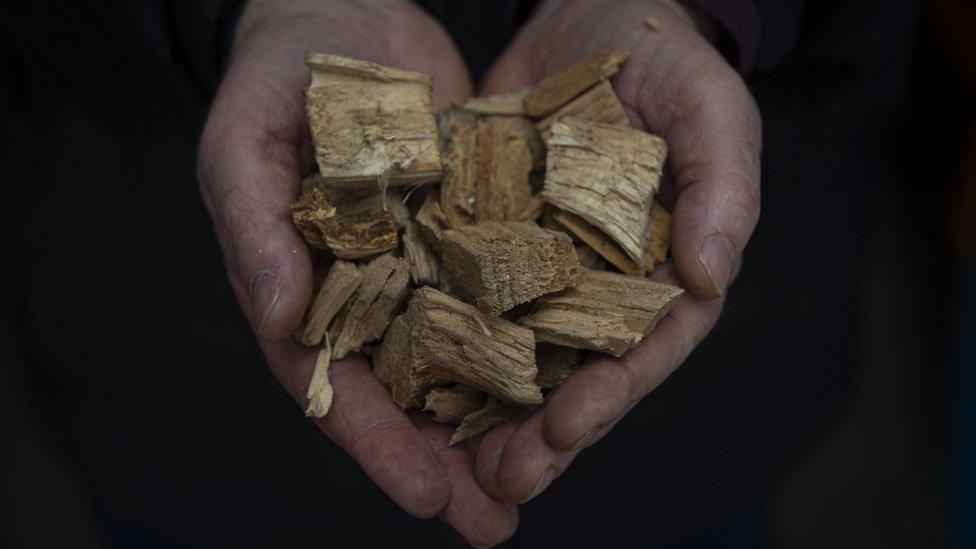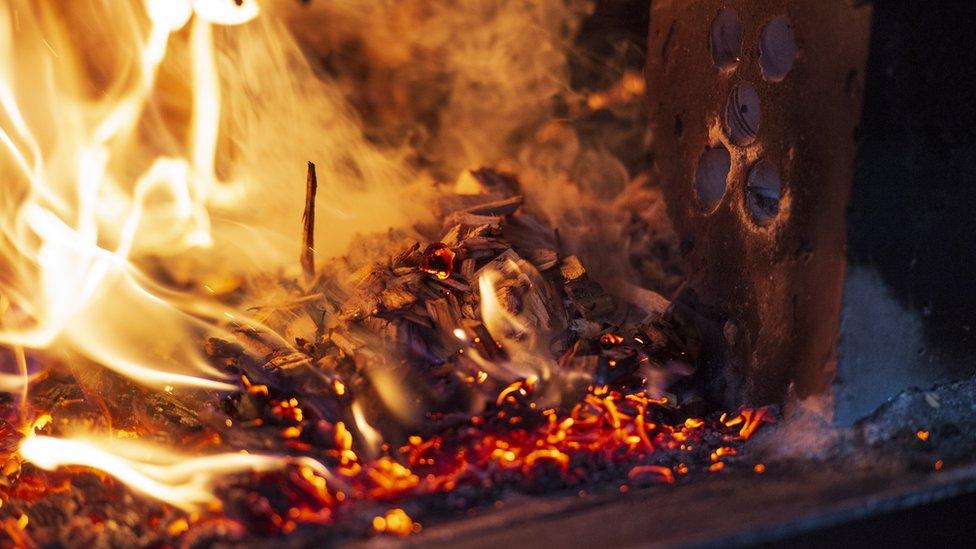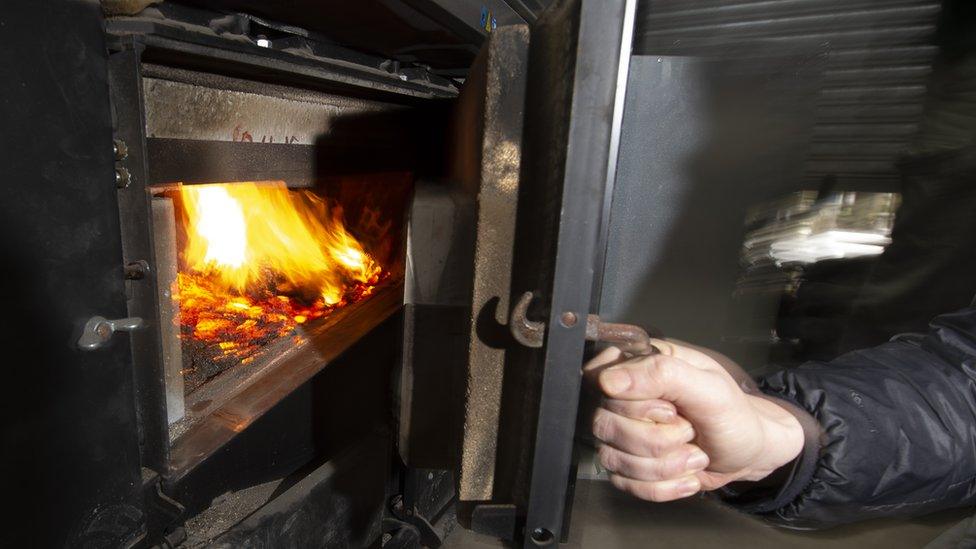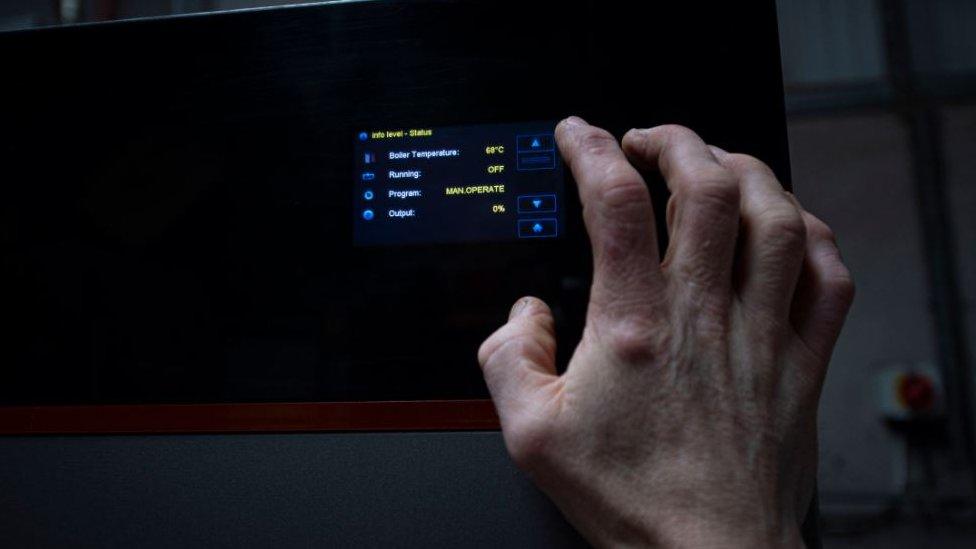Renewable Heat Incentive scheme: What is it?
- Published

After 114 days of oral evidence, scores of witnesses and 1.2m documents, the report into the Renewable Heat Incentive scheme (RHI) in Northern Ireland is being published.
The fall-out from the scheme led to the collapse of Northern Ireland's government. It was not restored for three years.
BBC News NI takes a look back at the scheme and its aims.
What is it?
A 20-year incentive to encourage the move from fossil fuels such as oil and gas, to a renewable source of heat. The Northern Ireland Executive had set a target of 10% renewable heat by 2020. It was managed by the Department of Enterprise, Trade and Investment (Deti), the forerunner of the Department for the Economy.
How many businesses are in it?
Official figures show 1,170 sites with 2,128 boilers on the non-domestic scheme. Agri-food is heavily represented, with 1,114 boilers of which 800 are in poultry sheds. The remainder is spread across a range of business sectors, including hotels and care homes.

What created the overspend?
The subsidy was higher than the fuel cost. The more heat generated, the more you got paid - the so-called "cash-for-ash". There were no cost controls, no easy way to suspend 20-year guaranteed payments, no planned review and the false assumption that Westminster was paying the bill.
Why was Northern Ireland left footing the bill?
After the 2010 election, the Conservatives changed the accounting rules to bear down on public spending. Previously a scheme like RHI, where future expenditure was unpredictable, would be entirely funded by the Treasury. But a new funding model meant any in-year overspend would be met from Stormont budgets.
GB departments were told, but Northern Ireland's Finance Department didn't get a clear steer, though neither did they ask. One official got it in writing and told her bosses, but when she left the Enterprise Department the knowledge effectively left with her.
How was 'cash-for-ash' missed?
The subsidy hadn't always been higher than the fuel cost. Energy consultants Cambridge Economic Policy Associates (CEPA) had recommended it be set lower and told the department cost controls weren't needed.
But when the plans went for public consultation, the argument was accepted that subsidies should be higher. The question of cost controls was not revisited in a subsequent consultants' report and the idea that they weren't required took hold.

How much was the overspend?
The figures vary and are disputed. The Economy Department says that without cost controls it could have been £700m over 20 years - higher than the initial estimate of £490m. Costs were capped in November 2015, the RHI scheme was closed to new entrants in February 2016 and subsidy rates were slashed in 2017 and in 2019.
A Westminster committee was told in May 2019 that the actual overspend had been £33.8m. Treasury did pay a little of that, but Stormont was left with a bill approaching £30m.
Did Arlene Foster as a minister make the final call on RHI v a grant scheme?
Yes, but the inquiry heard she got a wrong steer from senior civil servant Fiona Hepper who told her RHI would provide the most heat at the best cost. There were claims officials had their hearts set on RHI and the minister had been misled, something Ms Hepper denied. She claimed she'd gone through the options with Arlene Foster orally before the decision was taken, but there are no minutes of the discussion.

Why didn't we just copy the GB RHI scheme?
It had started the year before. But we were too late to avail of the GB legislation so we had to come up with our own. It was felt that different conditions, including our reliance on oil, justified a bespoke scheme. And politicians were keen to show devolution delivering and were supportive of the NI specific scheme.
Why didn't the Northern Ireland RHI scheme have cost controls?
The Department of Enterprise Trade and Investment believed its consultants' advice that they weren't needed and preferred that over other specialist opinion that suggested the inclusion of the controls.
Like in GB, it was happy to launch and add cost controls as it went.
Under pressure from Arlene Foster and the industry to get RHI started by Autumn 2012, officials resisted advice from scheme administrators in the Office of Gas and Electricity Markets (OFGEM) to replicate an emergency brake mechanism being introduced in Britain. That could have pushed a Northern Ireland launch back by a year, and meant millions being returned to the Treasury.
Official Fiona Hepper said she explained all this to Mrs Foster, but it was done verbally not in a written submission. There are no minutes and Mrs Foster said she has no recollection.
In 2013, cost controls were consulted on publicly as part of plans to extend the scheme to domestic properties. Cost control work was parked and there was a concentration on the domestic scheme - prompted, it seems, because they didn't have the staff to do both. That decision appears to have been taken by officials when really it was one for Arlene Foster.

Why did it rack up so much money?
The whole thing had been predicated on certain assumptions. The expectation was for 50kw boilers that would run 17% of the time. But mostly boilers that were twice as big - 99kw - were installed and they ran for 40-60% of the time. So they accrued much more in subsidy than had been anticipated. And some businesses like poultry farms had a legitimate high heat demand.
What other inherent flaws did the scheme have?
Promised reviews that might have caught problems weren't carried out. But the other big issue was that people forgot who was paying the bill - everyone thought it was the Treasury not Stormont. And staff who, in the early years of RHI, knew that an overspend threatened the departmental budget had moved on. It was December 2015, after cost controls had been introduced, before the penny dropped. And by then the budget was well and truly bust.

How come nobody picked up the problems?
In the early years, it was under-subscribed. The big concern was the Enterprise Department wouldn't hit its targets and have to hand back money to Treasury. That's why Mrs Foster wrote to the banks in early 2013 talking about "grandfathered" 20-year tariffs and urging them to lend on the strength of RHI.
There was no proper project management, promised reviews which had been part of the scheme approval weren't carried out and the inspection rate to check for abuse of the scheme was tiny.
There'd been a long-running spat between the Enterprise Department and the administrator, Ofgem, about whether Ofgem would give Enterprise personal details of those on the RHI scheme. Ofgem was worried it was a breach of data protection. That made it impossible for the Enterprise Department to identify whether or not multiple boilers were being installed on a single site.
But the Enterprise Department also messed things up. There was no proper project management of RHI, even though the rules say this should always apply when more than £0.5m of public money is to be spent. The initial outlay for RHI was £25m of budget over the first few years.
Why couldn't it just be stopped when problems emerged?
There was no mechanism to do so. The departmental scrutiny committee that signed it off was told there was a "big red (stop) button", but that was wrong and the assurance wasn't tested. In reality, the scheme design meant a lengthy legislative process and public consultation to change payments.